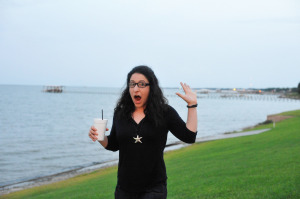by Sam Tackeff | Mar 9, 2014 | Books, Meal Planning
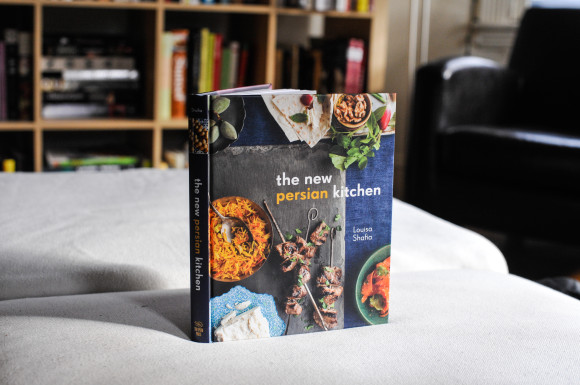
I follow Food52’s ‘Tournament of Cookbooks‘ – The Piglet – with the same fervor that I follow my Boston sports teams. Every year there are excellent selections, usually books that I have and cherish, and a handful of new ones that I have yet to explore. The judging is done by the culinary elite, professional chefs, food writers, and a few wild cards – this year I grinned excitedly when I saw Josh Malina’s name on the list. The reviews are always thoughtful, the judging is taken very seriously, and most of the time I find myself nodding along as the rounds progress. (One noted exception would be the upset when Burma lost last year, grumble.)
This season I had some favorites: Nigel Slater’s Notes from the Larder (i.e.: Kitchen Diaries II), which has a perpetual home on my coffee table and makes a weekly appearance on meal planning day for inspiration, Megan Gordon’s Whole Grain Mornings, because I hope to have a first cookbook as lovely as this one, and Deborah Madison’s Vegetable Literacy – just a great overall work. The winner, as it turns out, was also one of my favorites: Louisa Shafia’s ‘The New Persian Kitchen’.
I’ve had a copy of Louisa’s book for nearly a year now, and I’ve cooked out of it many times. The seared chicken with peaches (and saffron, turmeric, and cinnamon) became a summer favorite. Her flavors are reminiscent of my own familiar Turkish and Jewish culinary roots, and Sara Remington’s photographs are stunning – especially the ones of Louisa herself. In honor of the win, several of my meals this week are inspired by her recipes, specific recipes with page numbers listed below.
Week of Saturday, March 8th
Saturday: Teriyaki Chicken Legs, broccoli, and mashed potatoes. This is my comfort food. The mashed potatoes in small quantity acquired from the Whole Foods salad bar.
Sunday: Vietnamese takeout. I’ve been meaning to try the Vietnamese restaurant inside the Super 88 – and I have a Bodypump class at Commonwealth Sports Club right next door late Sunday afternoon. Perfect!
Monday: New potatoes with dill and lemon (p. 29), brussels sprouts and pancetta, with some olive oil poached fish (p.93). In my childhood home, there was a line down the middle of our table between the dill lovers (my mom and I), and the dill loathers (the men). I think my brother has now moved into “ambivalent” range, thank goodness.
Tuesday: Creamy beans and chicken/turkey sweet basil sausage, salad. The sweet basil sausages are from Trader Joe’s, and they are excellent! (I like all of their chicken sausages really.)
Wednesday: Lamb meatballs with mint and garlic (p. 88) and cucumber salad. Her version of kufteh is very similar to the Turkish Köfte I make quite often.
Thursday: Turmeric chicken with sumac and lime (p. 103).
Friday: Out.
What’s on your table this week?
–– Sam
by Sam Tackeff | Mar 2, 2014 | Books, Books in 2014

Image {via}
#8. If on a winter’s night a traveler by Italo Calvino
Translated by William Weaver
Paperback, 260 pages
First published 1979
Read on Kindle
“Reading is going toward something that is about to be, and no one yet knows what it will be.”
— Italo Calvino, If on a winter’s night a traveler
I’m not sure that I can really describe Calvino’s novel – a puzzle, a challenge for the reader, an essay on reading itself. Calvino made me think, and laugh, and smile through this entire book. This was a joy to read.
” How can you keep up with her, this woman who is always reading another book besides the one before her eyes, a book that does not yet exist, but which, since she wants it, cannot fail to exist?
— Italo Calvino, If on a winter’s night a traveler
A large part of the novel deals with language, translation, and the evolution of text which I read with deep fascination. One part of my day job is leading globalization and making an experience that was devised and created for one language, feel fluid and just as relevant in ten different languages. It requires careful choices, flexibility, and ingenuity to get the feeling just so. On that note, I haven’t read a work of translated fiction in a while, and I found William Weaver’s translation to be impeccable. After finishing the novel, I read this interview with Weaver and Calvino published in the Paris Review. It’s a great piece.
“Your house, being the place in which you read, can tell us the position books occupy in your life, if they are a defense you set up to keep the outside world at a distance, if they area dream into which you sink as if into a drug, or bridges you cast toward the outside, toward the world that interests you so much that you want to multiply and extend its dimensions through books.”
― Italo Calvino, If on a winter’s night a traveler
I’m sure I’ll find myself re-reading this novel in the future, and I’ll definitely be reading more of Calvino’s writing. The man is prolific. Next on my list is Why Read the Classics, a series of essays, summarized recently by Maria Popova of Brainpickings here: 14 Definitions of What Makes a Classic.
Do pick up this book!
by Sam Tackeff | Feb 25, 2014 | Baking, Books
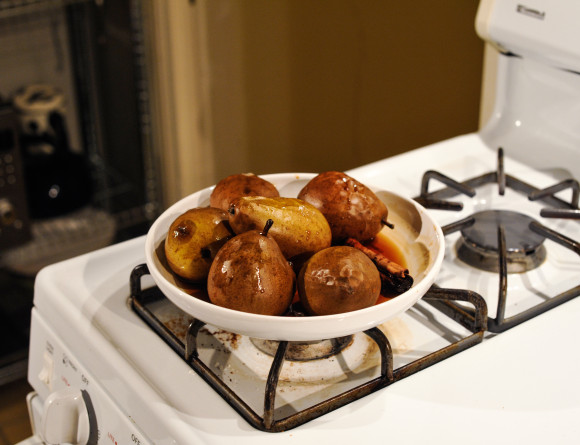
There was a period of time in the mid 2000’s when Richard Sax’s Classic Home Desserts was out of print, and there were rumors of it going for outlandish black market prices. Fortunately (or unfortunately?) it was republished in 2010, before I had to seriously contemplate selling my much loved copy for a large windfall. One of my favorite sections of the cookbook is the chapter on ‘Compotes and Baked Fruit’, because while most of the time I can’t be bothered to make elaborate desserts, cooked fruit is always easy, and feels virtuous.
Crinkly Baked Pears
adapted from Richard Sax’s Classic Home Desserts
with inspiration from Edible Boston
This recipe, more of a method, quite adaptable too, is for pears, slowly baked in their skins, in a bath of fortified wine, sugar, and spices. Preheat the oven to 300 F. In a shallow ceramic baking dish, mix a cup of Lillet – a citrusy fortified wine*– with half a cup of brown sugar, a cinnamon stick, a small knob of ginger, three or four allspice berries, and a few cloves if you have them. You could also add a strip of lemon zest and some vanilla, but I often make these without. Nestle 6-8 firm Bosc pears in the wine bath, stems up if you can, and bake for about two hours, basting every 15-30 minutes (or however often you’d like a taste of the luscious syrupy goodness) until the pears are tender, and the skins have begun to wrinkle. Remove from the oven, let cool slightly, and serve on their own, or with some ice cream, and plenty of the wine-sugar-syrup. Store the leftovers in the fridge, if you have them and reheat in the morning for a perfect breakfast.
*Sax’s original recipe calls for Marsala or dry red wine, but I opted for the fortified Lillet this go around. I’ve had success with Marsala, and Port as well. I also cut the amount of sugar in the recipe, and substitute brown sugar for white, because I find that brown gives it a little bit more depth of flavor that stands up well to the spices.
by Sam Tackeff | Feb 23, 2014 | Books, Books in 2014
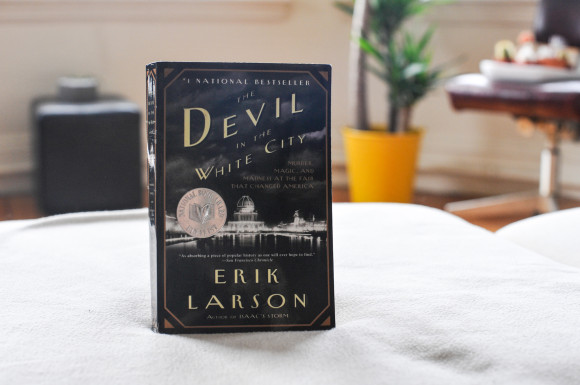
#7. The Devil in the White City by Erik Larson
Paperback, 447 pages (Vintage)
First published October 17th, 2002 by Crown
Borrowed from A.S.
I’ve been meaning to update my reading list over here. I’ve managed to make a large dent in my book stacks in February, and I’m up to my 13th book for the year. Number seven was a book that’s been sitting in the house for months, borrowed from a friend. Feeling like it had overstayed it’s welcome in the house, I finally picked it up and read it in a weekend, barely surfacing from the pages to eat.
Made up of several (non-fiction) sub-plots, the book revolves around the World’s Columbian Exposition (the Chicago World’s Fair). A substantial portion of the book is devoted to architectural history – the outstanding feat of Daniel Burnham, Frederick Law Olmsted, and the veritable who’s who of architects of the day – building the shining White City on a timeframe that seems impossible even now to imagine. The other half of the book is devoted to a deliciously evil serial killer – making it a poor choice of reading for the evenings that I was alone in the house. Weeks later I’ve been thinking about this book almost daily. Loved it!
by Sam Tackeff | Jan 13, 2014 | Books, Books in 2014
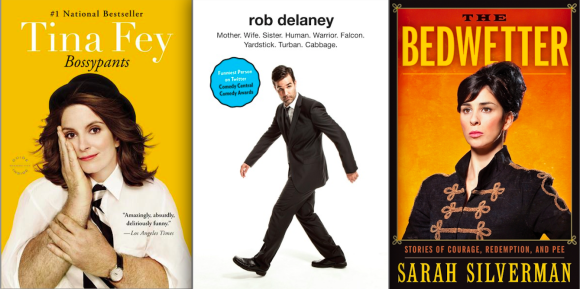
If we’re going to discuss life resolutions, as one is wont to do around this time of year, I’d say that one of my top resolutions in life right now is simply to laugh more. Deep belly laughter is shockingly restorative, and as adults, we do much too little of it.
The first three books I read this year were written by people who are funny for a living. Now, I should say that reading memoirs by people who are funny for a living is not the same as reading/watching/listening to their comedic work. These books were all funny, certainly, but they were also moving, thought provoking, and introspective. In some sections they were painful, dark, and sad. In each, the most fascinating parts were the stories from childhood, anecdotes about family, first jobs, awkward relationships, and weird career trajectories. Two of them featured bedwetting as a prominent plot point (Rob, Sarah). One, puberty quite early (Tina), another, quite late (Sarah). All three featured excessive body hair. The low points, I think, for all three books, were the bits about present day or recent history, specifically revolving around their current shows, or how they got the book deal, or what may be up next – these sections all felt like weird filler, without the passage of time necessary for true introspection.
Each had moments that I’ll continue to think about for quite some time – Rob Delaney’s honest discourse about both his depression and alcoholism, Tina Fey’s thoughts about management style, with examples of both her own, and Lorne Michaels’, and Sarah Silverman, on the absurdity of sexism in censorship.
I quite enjoyed all three.
#1. Rob Delaney: Mother. Wife. Sister. Human. Warrior. Falcon. Yardstick. Turban. Cabbage. by Rob Delaney
Hardcover, 208 pages
Published November 5th 2013 by Spiegel & Grau
Listened to audiobook – Random House Audio
#2. Bossypants by Tina Fey
Paperback, 275 pages
First published January 3rd, 2012 by Back Bay Books
Read paperback, as well as listened on audio read by author
#3. The Bedwetter: Stories of Courage, Redemption, and Pee by Sarah Silverman
Hardcover, 256 pages
Published April 20th 2010 by HarperCollins
Listened to audiobook, read by author
by Sam Tackeff | Jan 10, 2014 | Books
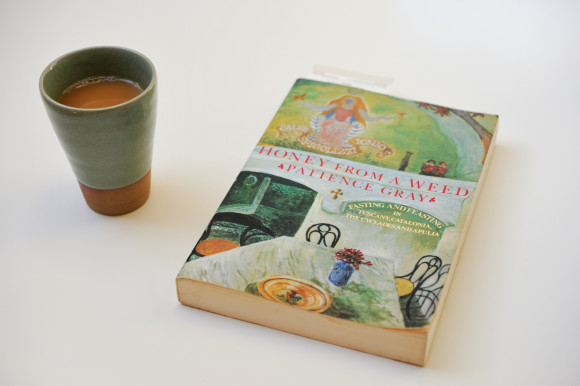
There are stacks of books at my bedside, hundreds on my to-read list. Books invade the living room and every empty surface in this house. And yet somehow last year I read less books in total than any year in my adult life. So I sat down last week and wrote a list of books I’d like to fall into in the next few months to make sure that I consume an adequate amount of literary prose this year. Some are on my shelves, and have been gathering dust for years, others I’ll take out of the library, some will be downloaded onto the phone to take with me on the go. I have a few on the list that I’ll be listening to as audiobooks – perfect for my thirty minute walk commutes.
Certainly the genres aren’t covered here, but I tried to go as broadly as I could stand. A few I’ve read chapters of here and there, others I’ve skimmed, but most are new to me – now excuse me, I must go off and read.
Classic: The Catcher in the Rye by J.D. Salinger
Philosophy: Zen & The Art of Motorcycle Maintenance by Robert Pirsig
Current Fiction: The Circle by Dave Eggers, The Signature of All Things by Elizabeth Gilbert
Food Memoir: Home Cooking: A Writer in the Kitchen by Laurie Colwin, Blue Plate Special: An Autobiography of my Appetites by Kate Christensen
Crime: Gone Girl by Gillian Flynn
Children’s Fiction: Howl’s Moving Castle by Diana Wynn Jones
Humor: Bossypants by Tina Fey
History: Devil in the White City by Erik Larson
Audiobook: Ocean at the End of the Lane by Neil Gaiman
Of course I don’t count cookbooks – they get read from cover to cover, but get their own category. Currently I’m deep in Vegetable Literacy by Deborah Madison, and Modernist Cuisine at Home.
Addendum, other book lists of note: for the past several years I’ve been ticking my way through the BBC Big Read List – I reckon it’ll take me the next five years or so to get through. I’m also enthused about the No Obligation Reading List over at the Knicknackery – if you are looking for some heavy hitting fiction that will keep you through the winter, and a few great non-fiction options, that’s the place to look.







